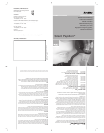
Fig. I: Loosen the straps by releasing the Velcro
®
fasteners. With the clip fastener open, pull the
headgear over your head.
Fig. J: Close the clip fastener. Tighten the straps
on each side and close the Velcro fasteners. Ensure
that the upper straps are at the same height
above each ear. The lower straps must be below
the ears. The saddle part of the headgear should
be centered at the back of your head.
Fig. L: (Optional) Secure the air tubing [20] over
your head using the Velcro fastener of the AeroFix
plus tubing clip [19], available separately.
Switch on your respiratory therapy device and
get into bed. Check that the mask is fitted
correctly.
Note: The mask should not pinch, and should not
leave any pressure marks. No air should be able
to escape between the skin and the mask cushion.
Use the headgear to adjust the fit of your Silent
Papillon nasal mask accordingly.
If necessary, you can adjust the angle between
the frame base [4] and the forehead frame [3] to
four different positions [22] [Fig. M]. The forehead
pad [1] can be attached to the upper or lower
attachment holes [2] on the forehead frame.
Cleaning in the Home
Environment
For reasons of hygiene, the nasal mask must be
cleaned every day.
Wash your hands before cleaning the nasal mask,
and always clean and rinse the mask with drinking-
quality water. Never use soap, chlorinated,
corrosive, or abrasive products, or cleaning agents
with a high alcohol content, since these may
damage the material. Never use metal brushes
or steel wool.
Cleaning
Clean all components of the nasal mask daily after
use with a warm (approx. 30°C), mild dishwashing
solution for about 5 minutes.
For effective cleaning, take the mask apart as
described in the “Disassembly of the Nasal Mask”
section. Remove any deposits in the air junction
[8]. For optimum cleaning, the mask cushion can
be turned inside out.
Then rinse all parts thoroughly in drinking-quality
water to remove all remaining traces of
dishwashing solution.
The AeroFix II headgear [18] and AeroFix plus
tubing clip [19] should be cleaned once weekly.
Detach the headgear and tubing clip from the
nasal mask and close the Velcro fasteners.
The headgear may be washed by hand or in the
washing machine at 30°C. Dry the headgear on
slow spin, or drip dry.
Caution! The headgear is sensitive to heat, and
must not be ironed.
Drying
For reasons of hygiene, it is important to dry the
nasal mask thoroughly. Wipe the cleaned
components dry with a clean, lint-free cloth.
Caution! Ensure that the nasal mask is not exposed
to direct sunlight or placed on a heater, since this
could damage the mask material.
Thermal Disinfection
Disinfection of the nasal mask in the home
environment is generally not required. Disinfection
of the mask may be necessary where infectious
diseases are present, in the case of a known im-
mune deficiency, or where directed by a physician.
The purpose of the disinfection process is to kill
pathogens. For disinfecting your nasal mask, we
recommend the use of a commercial baby bottle
disinfector.
Warning! Burn hazard. Always comply
strictly with the contents of the disinfector
instruction manual.
The nasal mask must be disassembled, cleaned,
rinsed, and dried before disinfecting.
Always disinfect with distilled water, to prevent
any lime deposits from building up on the surface
of the nasal mask. The water vapor must reach
all parts of the nasal mask. Allow the nasal mask
to cool before removing it from the baby bottle
disinfector. After disinfection, the nasal mask must
be dried once again.
The nasal mask can be thermally disinfected up
to 60 times using a baby bottle disinfector.
Functional Test
Test the correct functioning of the nasal mask
after each cleaning or disinfection operation.
Inspect the nasal mask for any defects or changes
in the condition of the materials. A defective mask
must always be replaced.
Assuming the cleaning procedure described above
is followed, the Silent Papillon nasal mask, AeroFix
II headgear, and AeroFix plus tubing clip have a
useful life of one year.
Storage
Keep the nasal mask in a dry, dust-free location
protected from direct sunlight until next required.
Cleaning, Disinfection, and
Sterilization in the Hospital
Environment
Information on cleaning, sterilization, and
disinfection procedures for the Silent Papillon
nasal mask in the hospital environment is available
on request from MAP Medizin-Technologie GmbH
(REF 560 081).
GB


















